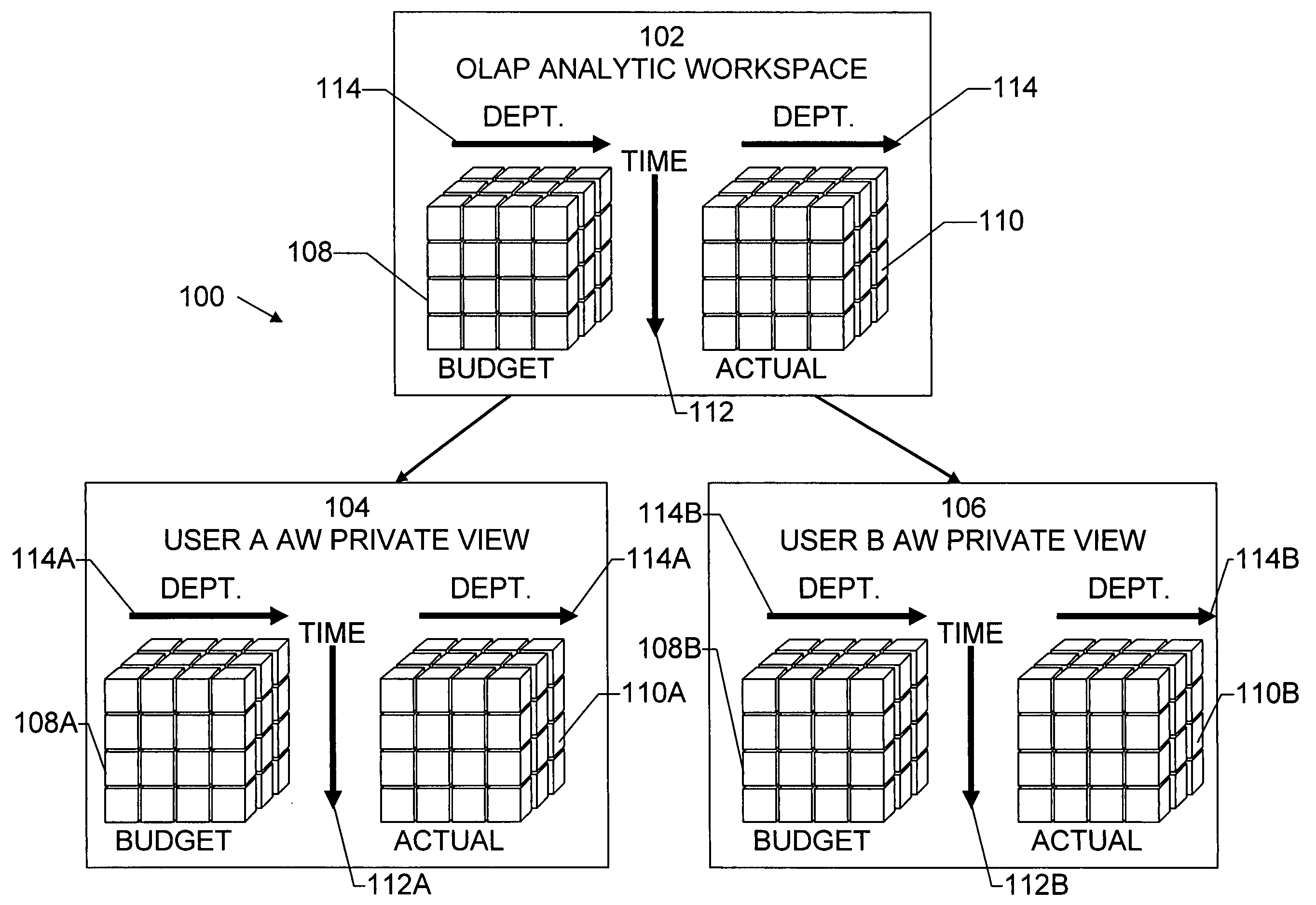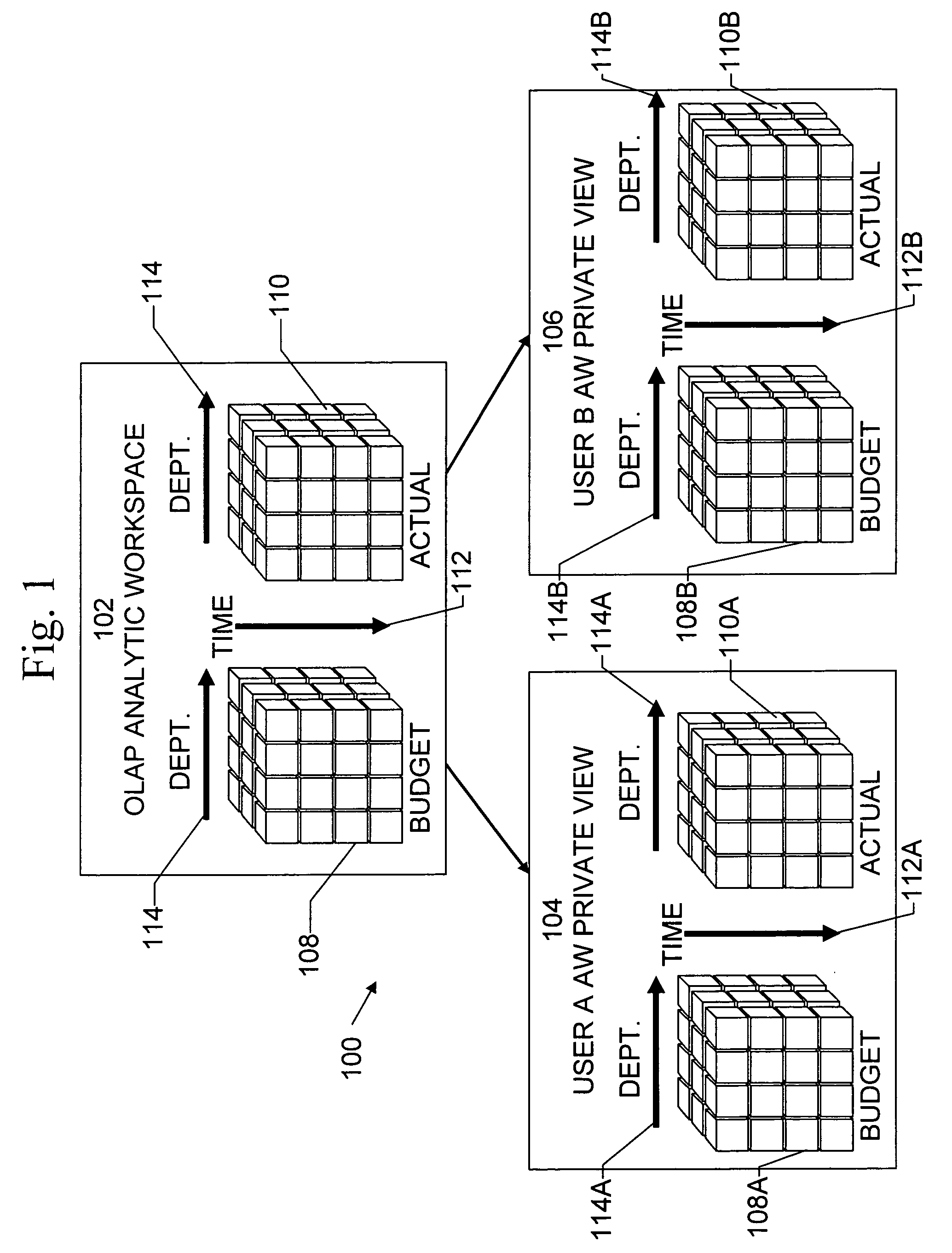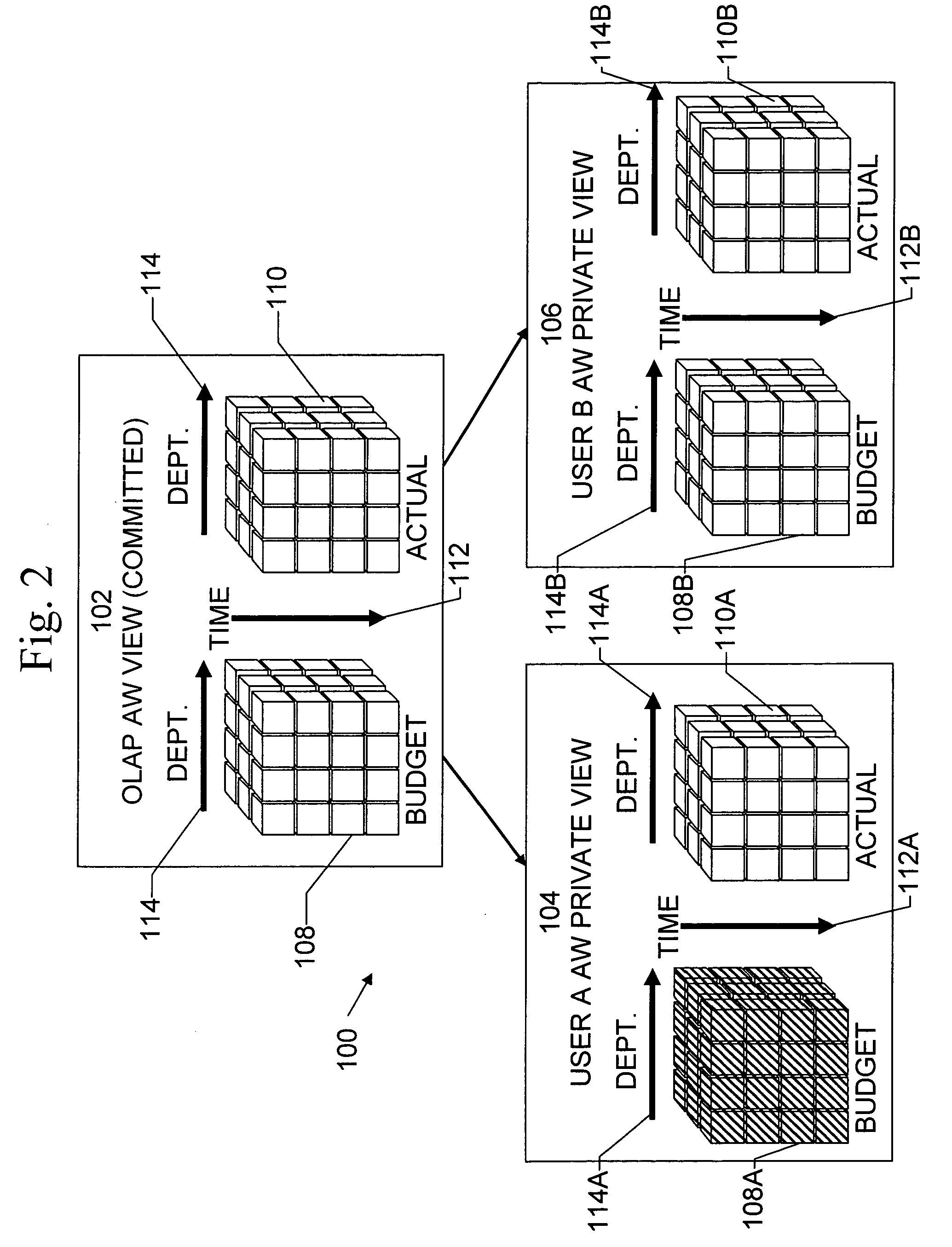Multiple writer support in an OLAP environment
- Summary
- Abstract
- Description
- Claims
- Application Information
AI Technical Summary
Benefits of technology
Problems solved by technology
Method used
Image
Examples
Embodiment Construction
[0032] The present invention provides the capability for multiple writers to make permanent changes to OLAP data while providing improved performance and ensuring data consistency. The present invention allows the application to store multiple OLAP objects in a single container, such that each OLAP object in the same container may be permanently modified by a session concurrent with another OLAP object being permanently modified by a different session. By allowing the OLAP objects within the container to be modified independently, the present invention eliminates much of the complication of having multiple containers (Analytic Workspaces) and the necessary duplication of data the multiple containers require. Moreover, since the OLAP objects in a single container share structural information, the structural information is automatically kept consistent for all OLAP objects in the container.
[0033] The multiple-writer database access of the present invention supports both optimistic an...
PUM
 Login to View More
Login to View More Abstract
Description
Claims
Application Information
 Login to View More
Login to View More - R&D
- Intellectual Property
- Life Sciences
- Materials
- Tech Scout
- Unparalleled Data Quality
- Higher Quality Content
- 60% Fewer Hallucinations
Browse by: Latest US Patents, China's latest patents, Technical Efficacy Thesaurus, Application Domain, Technology Topic, Popular Technical Reports.
© 2025 PatSnap. All rights reserved.Legal|Privacy policy|Modern Slavery Act Transparency Statement|Sitemap|About US| Contact US: help@patsnap.com



